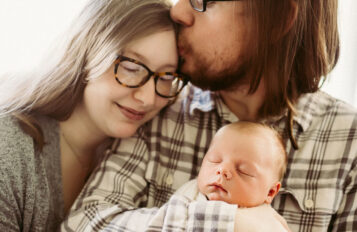Imagine meeting your spouse for the first time at the altar.
Sounds strange, doesn’t it? Well, the open adoption experience is a bit like that.
In open adoption, adoptive parents and birthparents often find themselves brought together under unusual circumstances with next to no notice.
What’s more, despite their differences, they’re expected to develop a long and lasting relationship with each other on their own from that point on.
As with every type of adoption, open adoption has its share of pros and cons. Here are some to consider before you dive into yours.
For birth parents, the advantages of open adoption are:
- The option to find adoptive parents for your baby, talk to them and meet them
- Creating an adoption plan for your child
- Maintaining a relationship with your child as he or she gets older
- The ability to directly answer questions your child may have about why he or she was placed for adoption
- Feeling less uncertainty about the future, knowing that your child is loved and cared for
For adoptive parents, the advantages are:
- Having a say in the matching process
- The ability to talk and meet with your child’s birth parents
- A feeling of validation from being chosen by your child’s birth parents
- A heightened sense of security from knowing about your child’s birth parents and why they chose adoption
- Having access to medical information about your child in the case of serious illness
- The ability to answer questions your child may have about his adoption
- The support and encouragement from your child’s birth parents in your child-rearing decisions
For adoptees, the advantages are:
- A deeper understanding who you are and where you came from
- An explanation as to why he was placed for adoption by his birth parents
- The ability to have a relationship with his birth family over the years
- They don’t need to search for or fantasize about his birth parents
Most open adoptions are successful. But that doesn’t mean they’re problem-free. As with any relationship, they still require a lot of work. And have their share of disadvantages as well.
For birth parents, the disadvantages are:
- The possibility that the family they choose to raise their child will change their minds before the placement
- The possibility that the family they choose may be working with another prospective birth family at the same time
- Pressure to stick with the family they’ve chosen because they’re worried that changing their minds about them will hurt their feelings
- The possibility that adoptive parents may want more or less contact than outlined in their agreement
The cons of open adoption for adoptive parents are:
- The possibility that they may not be chosen by prospective birth parents
- The possibility that the prospective birth parents may change their minds prior to signing the relinquishment papers
- The possibility that the birth parents could withhold important key personal or medical information about them
- The possibility that the birth parents could want more or less contact than agreed upon
The cons of open adoption for the child:
- Depending on the circumstances and individuals involved, he or she still have unanswered questions about his adoption
- He or she may not ask question for fear of hurting his adoptive or birth parents
- He or she may still have fears about abandonment
- He or she may feel forced to choose sides in a disagreement between his two sets of parentsHe may worry that spending time with or showing his support for one set of parents will upset the other one
As with any adoption arrangement, open adoption is far from simple. It has its share of pros and cons, benefits and risks. Having two sets of parents can be complicated even at the best of times. But by keeping things real, adoptive parents and birth parents have the ability to work together and give their child a loving and secure future.

